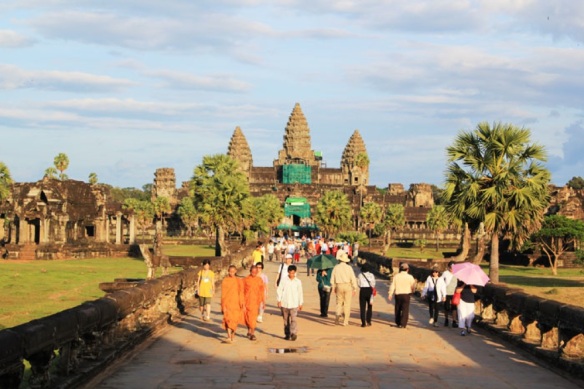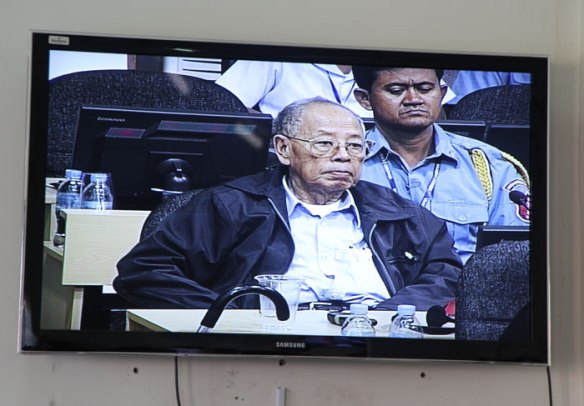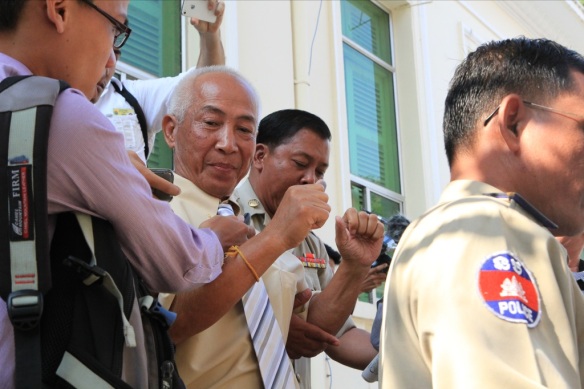 To feel jaded about one of the planet’s most impressive monuments, is perhaps, to be tired of life. Or it is just a normal state of the human condition: when confronted with wonder, we are inevitably prone to sorting it away into neat boxes, to (cleverly) making it less and less wondrous every single time that we view it.
To feel jaded about one of the planet’s most impressive monuments, is perhaps, to be tired of life. Or it is just a normal state of the human condition: when confronted with wonder, we are inevitably prone to sorting it away into neat boxes, to (cleverly) making it less and less wondrous every single time that we view it.
So too, has this happened when it comes to me and the temples of Angkor in Cambodia.
I first visited Angkor Wat in 2010 when the idea of moving to Asia was still new and romantically exciting to me: I was set to begin my first-ever newspaper job but wanted first to spend a week wandering around Cambodia’s crown jewel (or whatever) before dropping into the 2 to 12 and the perennial agitated shouting of the newsroom.
So I went to Siem Reap — bought a flight out of Bangkok, instead of braving the dodgy trans-border bus — and waited expectantly in the flight waiting area, looking at the people around me for tell-tale signs of being seasoned expats: I imagined they would all possess thousand-mile gazes and weird scars and interesting clothing choices. I look back on it now and they were pretty much all Lonely Planet toting Dutch tourists wearing practical Khaki clothes, but it felt sort of alluring at the time.
We took a small turboprop with tropical fish painted on it over the great marshy expanse of Cambodia, which gleams like a mirror in the sun from a plane window, and dropped into Siem Reap at the small airport there. It is an old airport: one where you disembark down metal stairs in a Jackie-O esque fashion, stepping into a sweltering and sugar palm-tree festooned plains land. (A landscape that now populates both my dreams and my days — but then, it didn’t. This was before).
The first time I set foot in Cambodia. I was excited: it was a big moment. At the time, I didn’t know how big it would become.
My first Cambodian tuk-tuk ever was waiting for me at the airport to take me to my hotel, driving the ubiquitous motorbike-hitched-to-a-chariot thing that has formed a large part of my daily life and times ever since.
“Different from the Indian tuk-tuks,” I noted to the driver, who was aware of the context and agreed.
“Simpler,” he said, punctuating the statement with a typically Cambodian ironic burst of laughter.
There’s no need to run through the whole description of a first time visit to Angkor Wat, I’m pretty sure. Not here. There’s the shocking size of the place and its awesome antiquity, the creeping vines and austere and crumbling faces of the Apsara dancers the sweaty heat of the day, and the child salespeople who have somehow memorized every world capital at some uncertain point of study. If you have been, you know all of this.
I rented a bike that first visit (an idea i look back upon three days later as rather shockingly ambitious) and sweated my way miles in the sun to the temples, where I maneuvered around large shoals of guided tourists. I climbed to the top of a pyramid temple nearish the Bayon and sat there for a while as a light misty rain began to fall, alone at the top of the steps and watching birds fly from tall tree to tall tree.
In these moments, moving to Cambodia seemed like the best possible choice.
I then took a bus to Phnom Penh and began work at the Cambodia Daily. That is another story: through this, and the passage of months and experiences both excellent and horrifying, I became at one point or another an expat.
And I kept going back to Angkor — when friends came, when family came, when I was around. Because why go to Siem Reap without staring at it? Even if it did cost me $20?
But it has happened: even Angkor Wat has become familiar. I have become, as they say, accustomed to its face.
I would not say the thrill is gone now — but rather, I’d describe it as the sensation of going through a beloved book again that you’ve already read once or twice or three times. You love the book but have also internalized large bits of it — can anticipate what it is saying before it says it, have figured out the intricacies of the plot and can stare around the corners at what is coming up. You fill in large swaths of it without reading the words. It’s become part of you.
You love the book but have also internalized large bits of it — can anticipate what it is saying before it says it, have figured out the intricacies of the plot and can stare around the corners at what is coming up. You fill in large swaths of it without reading the words. It’s become part of you.
So too with Angkor and me these days, where I’ve found that I can tick off and describe the monuments almost before I see them, know exactly where to navigate to see my favorite carving or strange pillar, or that particularly mango tree swarming with pissed-off weaver ants.
To that insufferable normalizing bit of my brain, even an Angkor visit has become something like navigating a suburban neighborhood in a practical car to a Starbucks outlet: it is a thing I know, a direction I can steer myself in.
 Perhaps Angkor has lost its exoticism with me but then I have gained something too.
Perhaps Angkor has lost its exoticism with me but then I have gained something too.
A cultural marvel has become in some curious respect a personal friend, a closeness rendered to me by the singular advantage of my being able to visit often — just about as often as I’d like, whenever I’m willing to brave the bus-journey up from Phnom Penh and elbow aside a few European tourists to get to where I’d like to go. None of this is arduous.
Yes, there are small secrets still left at Angkor to me, and there are still smiling Buddhas wreathed in vine and pot shards buried in jungle, and forest trails and seasonal waterfalls — but the size and shape of the main temples have become well known and comforting.
It is not defeat but familiarity. It’s a love borne out of going again, and again, and again.








